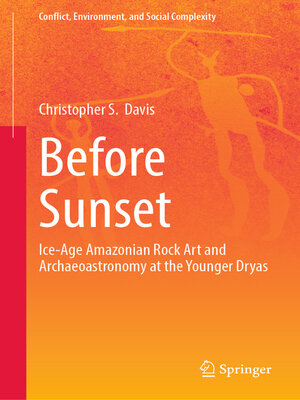Before Sunset
ebook ∣ Ice-Age Amazonian Rock Art and Archaeoastronomy at the Younger Dryas · Conflict, Environment, and Social Complexity
By Christopher S. Davis

Sign up to save your library
With an OverDrive account, you can save your favorite libraries for at-a-glance information about availability. Find out more about OverDrive accounts.
Find this title in Libby, the library reading app by OverDrive.



Search for a digital library with this title
Title found at these libraries:
| Library Name | Distance |
|---|---|
| Loading... |
Through a presentation of the oldest rock art dated in the Americas, located in Monte Alegre, Brazil, this book analyzes an ancient ecological-astronomy strategy that theoretically made the rapid human migration in the Americas successful. It helps answer two vital questions long held by scholars and the general public alike: How did humans survive the rapid and massive climate changes at the end of the ice age? And how did founding populations (especially in the Americas) manage successful settlement, relatively rapidly, in ecosystems entirely foreign to them? It further initiates questions about the universal role that astronomy (and even astrology) might have played in cognitive human evolution and the success of burgeoning sedentism and eventual "civilization" throughout the world. The book makes a substantial contribution because of the wealth of cultural information it provides from Monte Alegre. It explains the author's analysis of pictographs, lithics, and landscape modifications that were excavated there and provides novel findings on the chronology and archaeoastronomy of the art.
This book is indispensable for courses about Paleoindians, peopling of the Americas, environmental anthropology, cosmology, rock art studies, archeoastronomy, paleoecology, paleoethnobotany, and Amazonia. The pan-American indications of this work will appeal to archaeologists, historians, art historians, folklorists, Native American and Indigenous scholars, evolutionists, cognitive scientists, geographers, and the general public.







